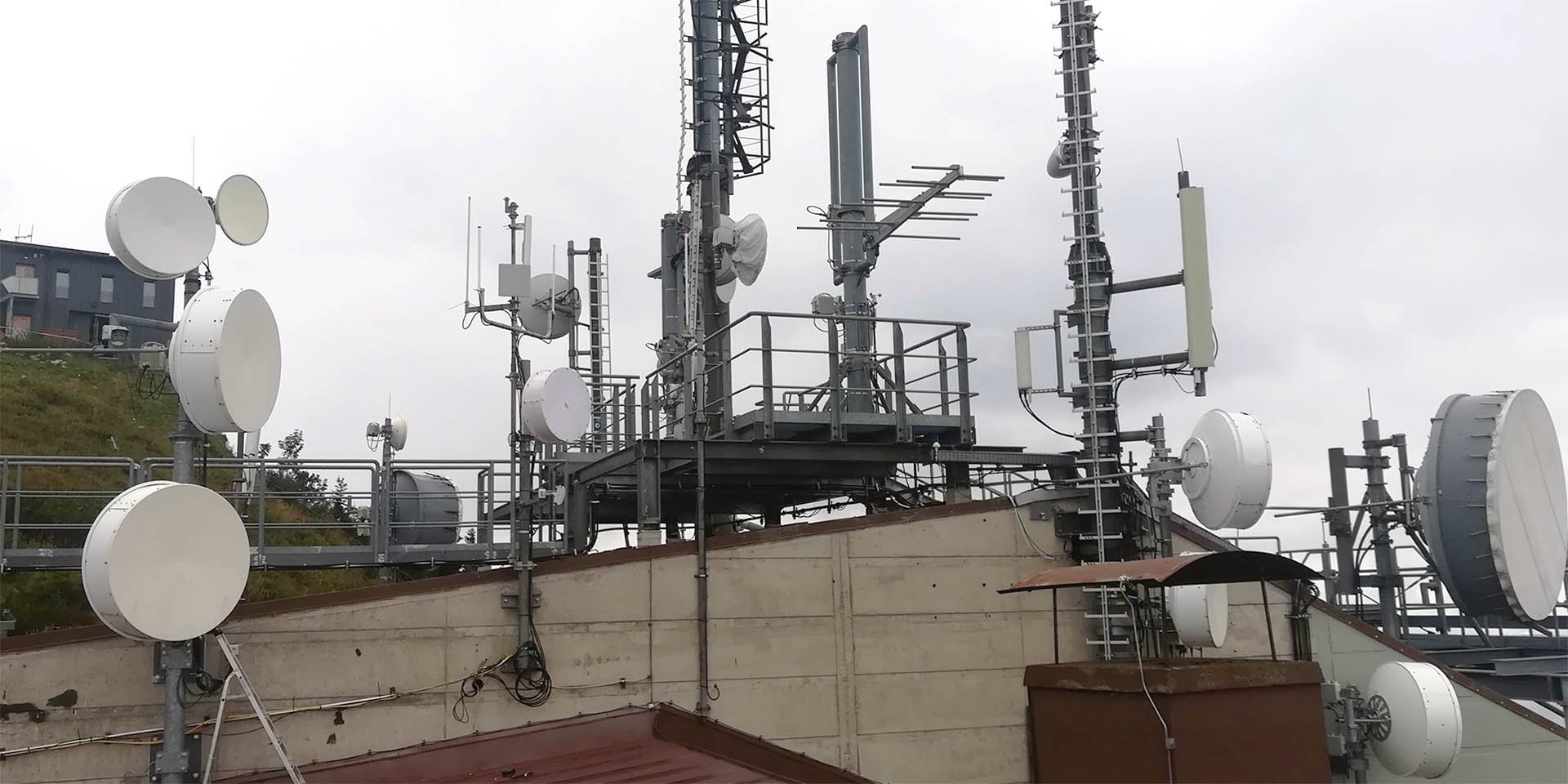How to maximize the performance of your omnidirectional antenna
Whether flight tracking, helium mining or amateur radio – we at jetvision very often observe that much of the actual potential of radio systems remains unused. Because you can give away even the quality of high-quality equipment through careless placement, an unsuitable antenna and the wrong selection of accessories.
The radio operator’s motto “The antenna is the best high-frequency amplifier” applies in general. But what else is there to consider in order to achieve the best possible range with omni-directional antennas?
Site selection
The ideal or shortest connection between two points is the straight line. This also applies to a radio link. By far the most important factor is the direct line of sight (LOS) between receiver and transmitter. We are talking here without exception of actual visual contact. So: Would the receiver see a position light from the transmitter?
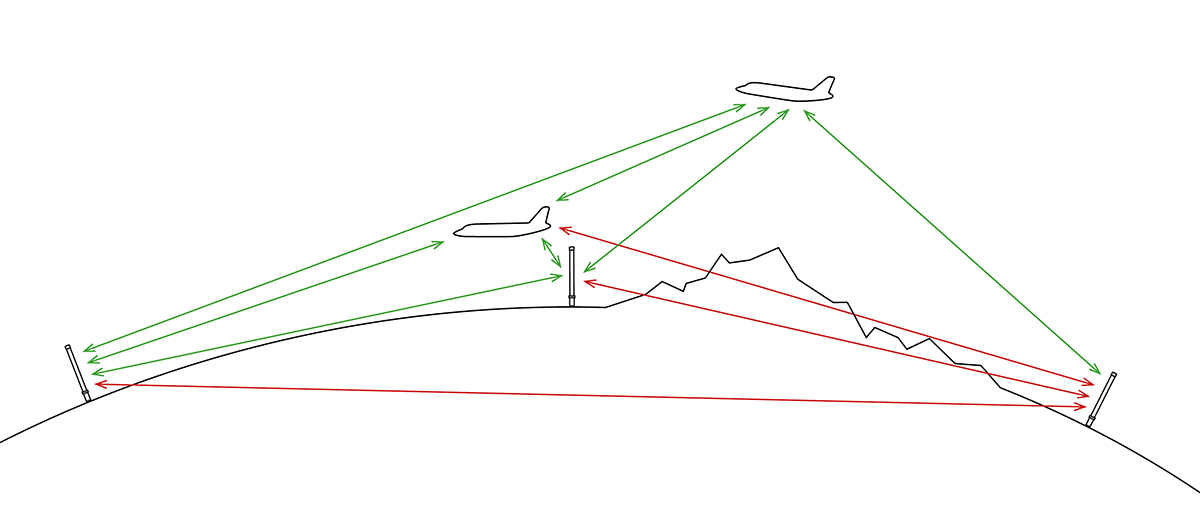
Terrain blocks the line of sight.
First of all, the height above the ground plays a role for the line of sight: The higher the antenna in relation to the environment, the larger the area it can receive signals from. And the less disturbing factors such as buildings and topography play a role. And there are many things that can stand in the way: settlements, mountains, forests, buildings, even the foliage of trees nearby – or, at greater distances, of course the completely natural course of the terrain up to the curvature of the earth. Above all, indoor positions, and be it only behind a coated window pane or under a roof, always involve enormous compromises.
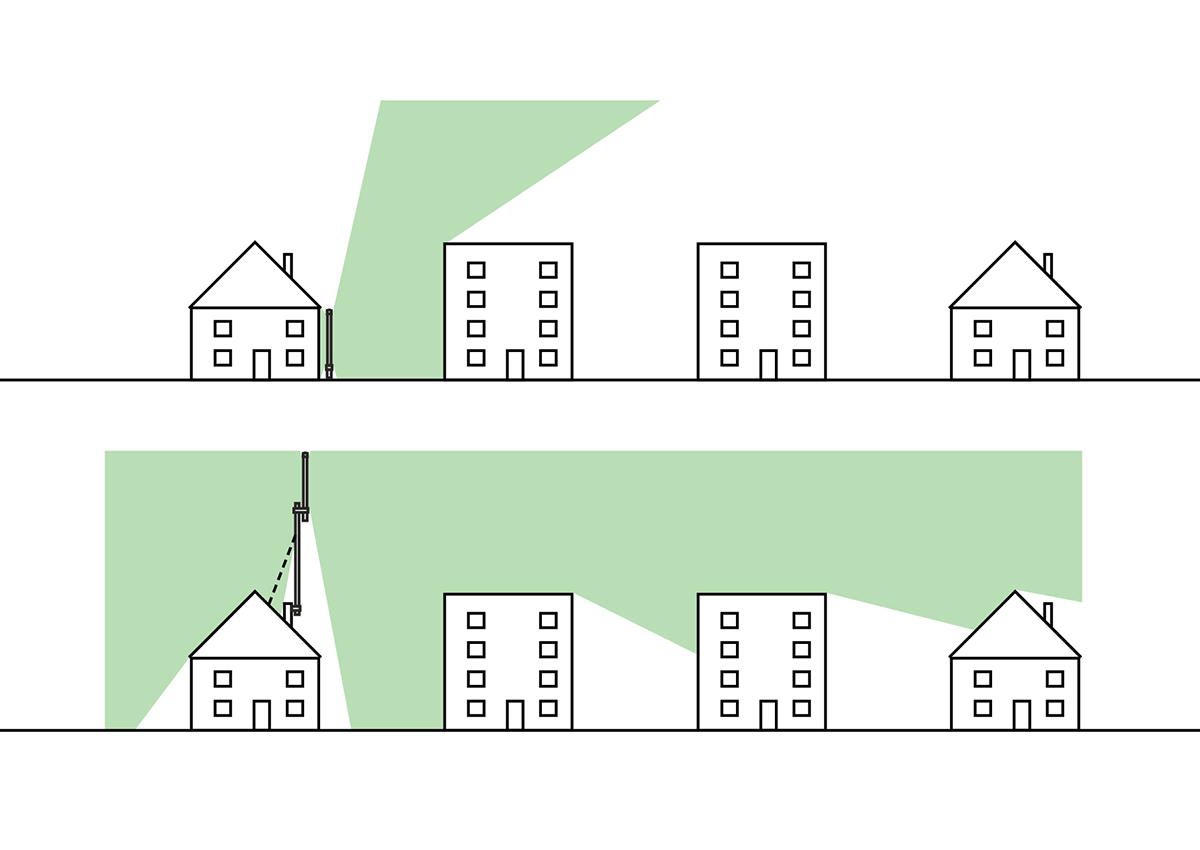
The height of the antenna is particularly important in cities. Radio shadows also occur locally.
In the immediate vicinity of the antenna, there are also a few things to consider when positioning and mounting: You should approach masts, other antennas and metal parts of neighboring objects at a horizontal distance. Cables are also a source of interference in the immediate vicinity, since the cable sheathings have an effect like metal parts.
Correct positioning of the antenna also means that it must be aligned vertically. The more precisely the perpendicular to the horizontal is maintained, the better the radio connection. With an antenna mounted at an angle, half of it radiates into the ground and not to the horizon, or it does not receive any signals from the horizon.
Antenna selection
In the radio frequency (RF) range, radio performance depends on the antenna – regardless of whether you use your antenna for transmitting or receiving. The saying that the antenna is the best amplifier means: prioritize antenna selection over anything else.
For example, an amplifier cannot compensate for an antenna that is too small. In fact, what applies here is: more is more. A doubling of the mechanical dimensions brings a maximum gain of almost +3 dB. A FLARM antenna of 1,2 inches, for example, cannot reach real 8 dB – please do not trust the marketing information of other manufacturers blindly.
As for the type of antenna, narrow band antennas usually have higher gain than broadband antennas. And if you’re considering adding an amplifier to your antenna of the right size, consider an active antenna with a built-in amplifier first. With our Active Diapason, for example, it is ensured that no connector or cable losses occur between the actual antenna element and amplifier. What’s more, these are even coordinated with one another.
Finally, depending on your location, consider whether you can or must rely on the durability of the antenna. Weather resistance is a must for outdoor use. Whatsmore, high-quality products can also withstand extreme heat, high humidity or, for instance, seawater. You should also reckon with errors: What happens if the glued areas break? Does water then possibly run into the antenna and maybe even further into the cable? We have had this unpleasant experience and have excluded these possible weaknesses from the outset when designing our OPA-5 passive antenna.
Antenna accessories
With masts and mastheads you can do good for the most important factor, antenna placement. If a powerful antenna is in a good location, only wrong accessoires can ruin the range. The most used hardware here are filters and amplifiers. The most used hardware here are filters and amplifiers.
Filters are used when interference from other transmitters cannot be avoided when choosing the location – such as the LTE/GSM mobile antenna on the neighbor’s roof. Without frequency interference, we advise against filters, since they also lead to an attenuation of the signal.
Receiver preamplifiers are a means of compensating for a lack of sensitivity in the receiving device or the attenuation caused by a long cable that is absolutely necessary. When designing our Radarcape and Air!Squitter, we made sure that the sensitivity was as good as possible. But helium miners or other receivers are usually cheaply and carelessly constructed. This means that with a Radarcape/Air!Squitter and the usual 10m cables, a preamplifier only provides a marginal improvement, but with R820T2 dongles or miners it is quite a big improvement. A distinction must be made here as to whether there is only reception, for example when an aircraft is being tracked. Or whether there is also broadcasting via the antenna, as with helium. A reception preamplifier will not be able to work in the vicinity of strong transmitters because the strong signals from the transmitters overload it. There it may be better or even necessary to use a filter so that the receiver is not overloaded by the transmitters.
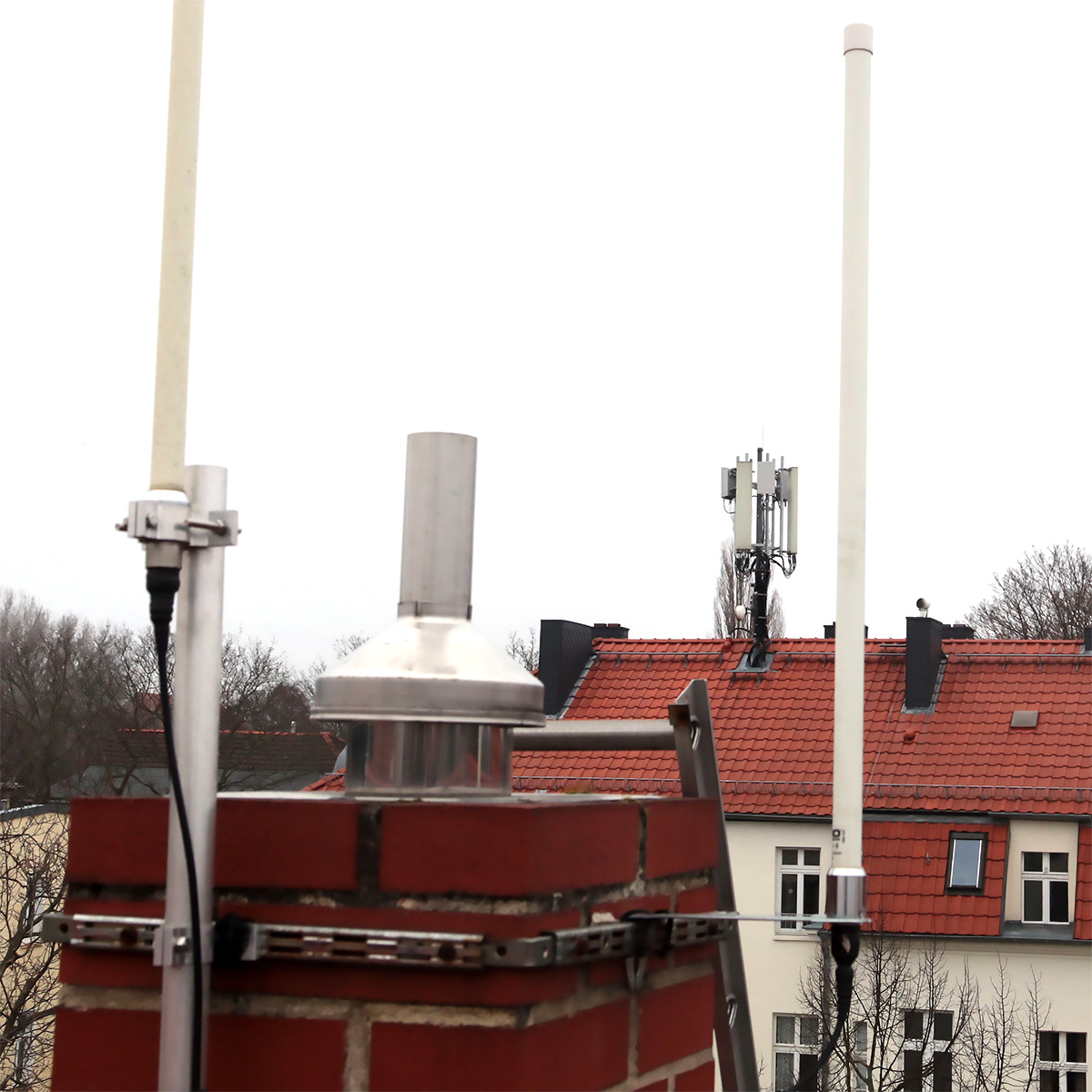
GSM antenna on the neighboring house.

Constant reception performance after installing our filter: The neighboring cell phone transmitter is interfering with the connection of our antenna – to be seen when it was switched off for maintenance purposes. Since we installed our filter, our antenna transmission rate has remained the same as during the shutdown.
Regardless of the use of a receiver amplifier, it is worth using as few adapters as possible and cables that are as short as absolutely necessary. Use high-quality adapters and the shortest possible, low-attenuation cables. And last but not least, please don’t forget to ground during installation: direct lightning strikes are unpredictable and protection against them with our means is rather hypothetical, but the discharge of static electricity is absolutely necessary.
Conclusion
The most important criterion when optimizing your high-frequency system is: location, location, location! An antenna that is as freestanding and placed as high as possible usually covers most of the surrounding area in direct line of sight. In the city, the immediate surroundings are the limiting factor. Houses and trees, especially those with a lot of foliage in the summer months, limit the range and strength of the signal. Other disturbances, such as near mobile phone masts, should also be avoided or compensated for.
Next in the list of priorities is antenna gain. You can recognize a good omnidirectional antenna by the fact that it achieves maximum gain for its mechanical size. If you then mount your antenna correctly (see graphic) and choose cables with low attenuation, almost nothing can go wrong.
Finally, depending on the cause of your setup’s performance degradation, you can significantly improve the performance of your antenna with an amplifier or a filter.
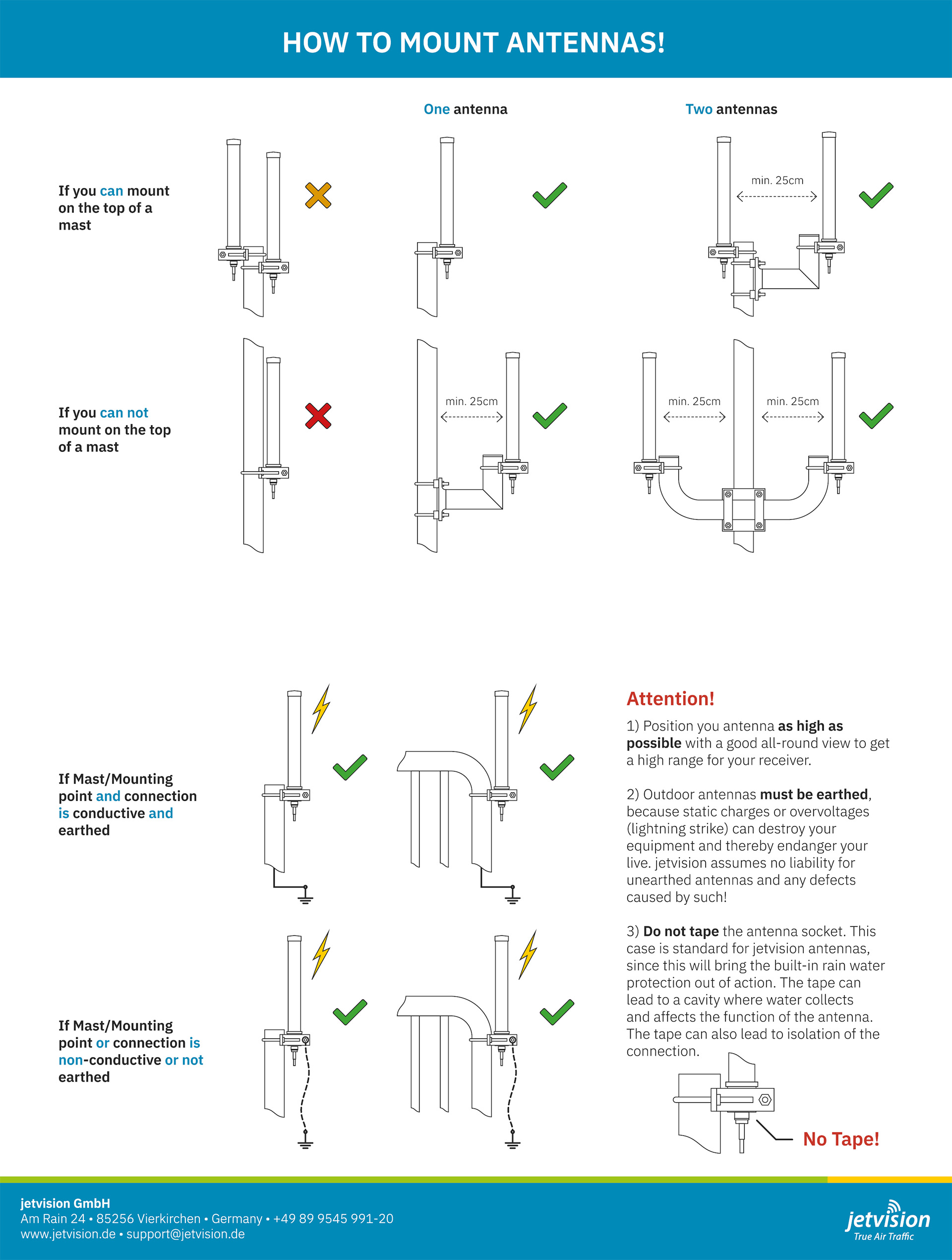
Installation instructions for antennas.


